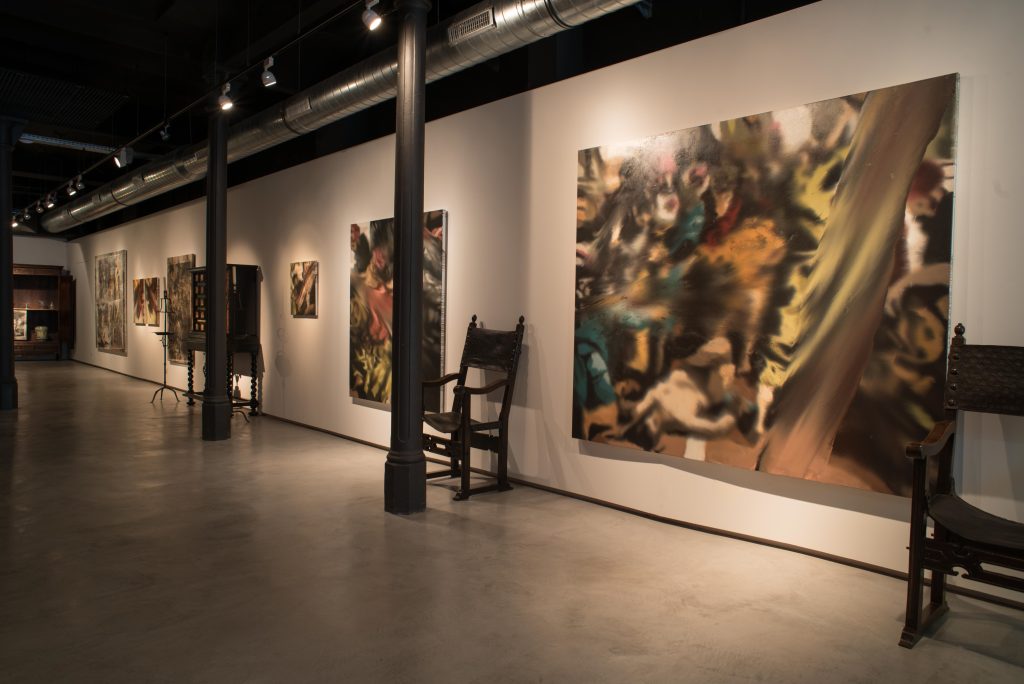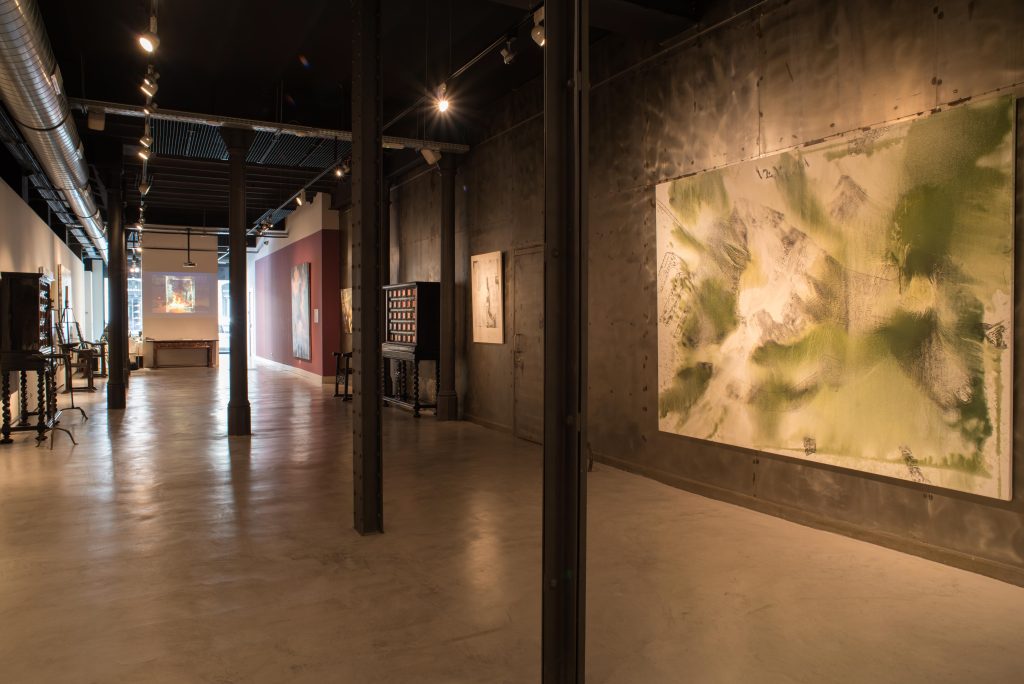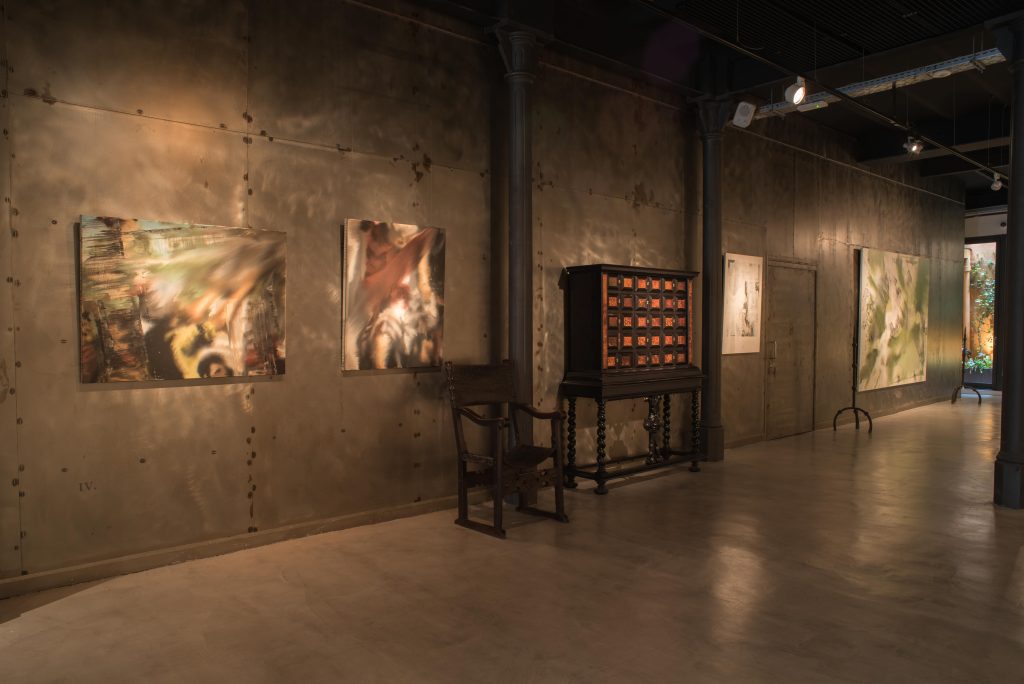2018 commemoration of the V centenary of the birth of Tintoretto
The use of classical paintings for my pictorial research started in 2005, with the Christ on the Cross of Velázquez, and later continued with other masters, such as Caravaggio, Tiziano, Guido Reni, Guercino, Tintoretto, Delacroix… I conceive it as an exercise conceptual of appropriation. A contradictory proposal of both homage and vandalism. The playground is the fight between opposites as the basis of each and every one of my paintings, in which I confront the figurative image to processes of pure abstraction, the narrative against the liberated gesture, the controlled against the arbitrary.
In my series of variations of classics I look for the motif of my painting in a painting by another artist. Meta-painting. I find it inspiring to appropriate an image with its own identity, an aesthetic code and a taste that expired centuries ago, that nobody would use to tell the world today. Painting an image of the real context in which I live would involve a dialogue with my surroundings. However, using a picture of almost 500 years ago and repainting it is a positioning between purism and inbreeding. I do not paint the emotions derived from an image of my surroundings but I nourish myself with the emotions that emanate from a past pictorial image, a code created by another artist and that has little or nothing to do with my time or my way of understanding existence.
I build on the basis of an attitude of repainting instead of painting in romantic position. I try to avoid the internal dictator who wants to master all the phases of creating a painting. I use only the skin of an old paint, the first layer, the style of the Cinquecento, which explains a scene in a figurative way. I intervene later on the surface with a pictorial gesture of abstract nature, almost of action painting, either with solvents in the oil paintings or with fire in the charcoal drawings. Like alchemy, understood in a metaphorical sense, that uses fire as a transforming instrument, not a destructive one.
I erase images, affirming as well as eliminating them. By blurring them capriciously with the solvent, I cause chance to intervene in the finishing decisions of the painting, emphasizing the liquid aspect of the discipline, trying to respect the dynamics of the nature of the paint puddles. Sometimes I use the roller as self-affirmation of the painting, but from outside the culture. I find useful the instruments of those painters who do not proceed with an intellectual purpose, like a wall painter, who paints just like me but without intellectual pretensions; only filling a surface with colour, without romanticism or heroic acts. That is the germ of my use of the roller, almost always in white, from top to bottom and from left to right, exactly like the wall painters. It is an exercise in the emptying of emotional contents, which reinforces the idea that the physical dimension of painting is beyond the word, of the concepts that sustain artistic theories, the simple awareness that painting can also be the simple human, mechanical gesture of covering a surface with white paint to lighten its weight. In the same way that one paints the walls of an apartment to which he has just moved in white to make it his own, as a gesture of appropriation of space.
1 result






Colloquium between Paola Marini and Jorge R. Pombo
